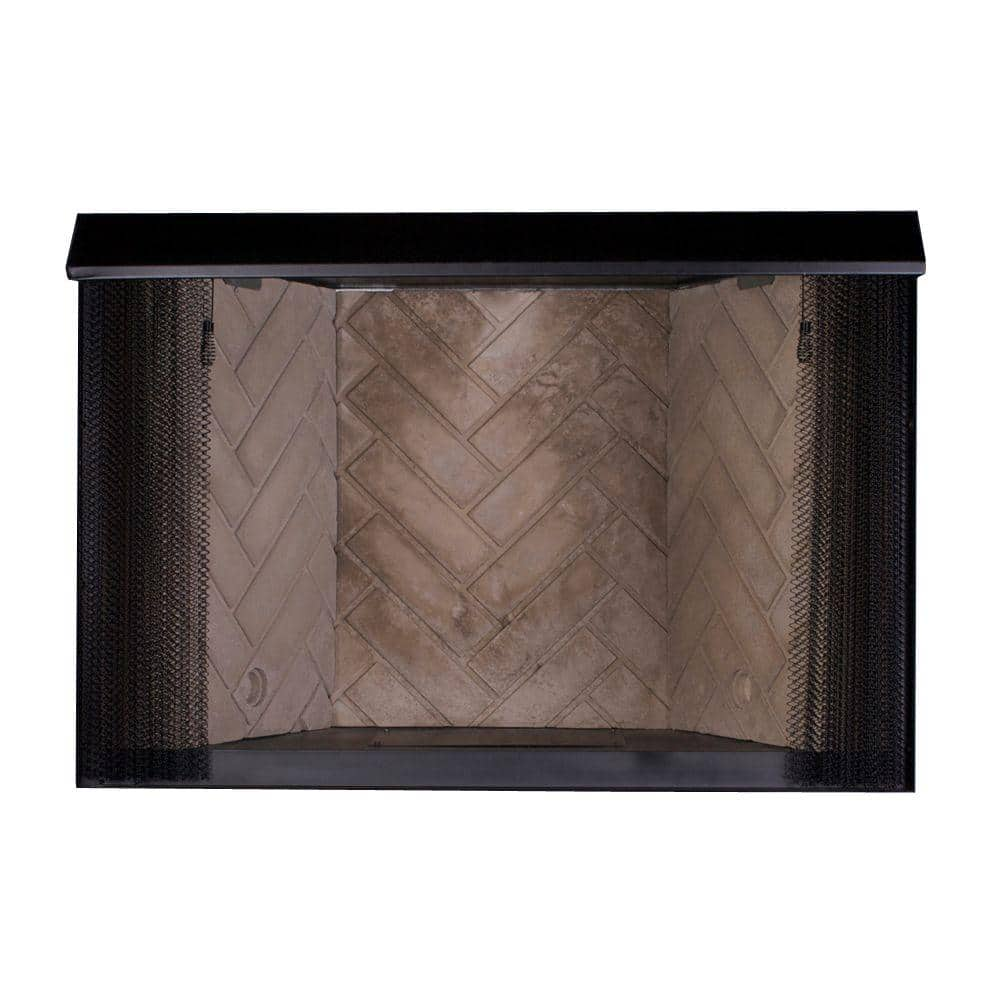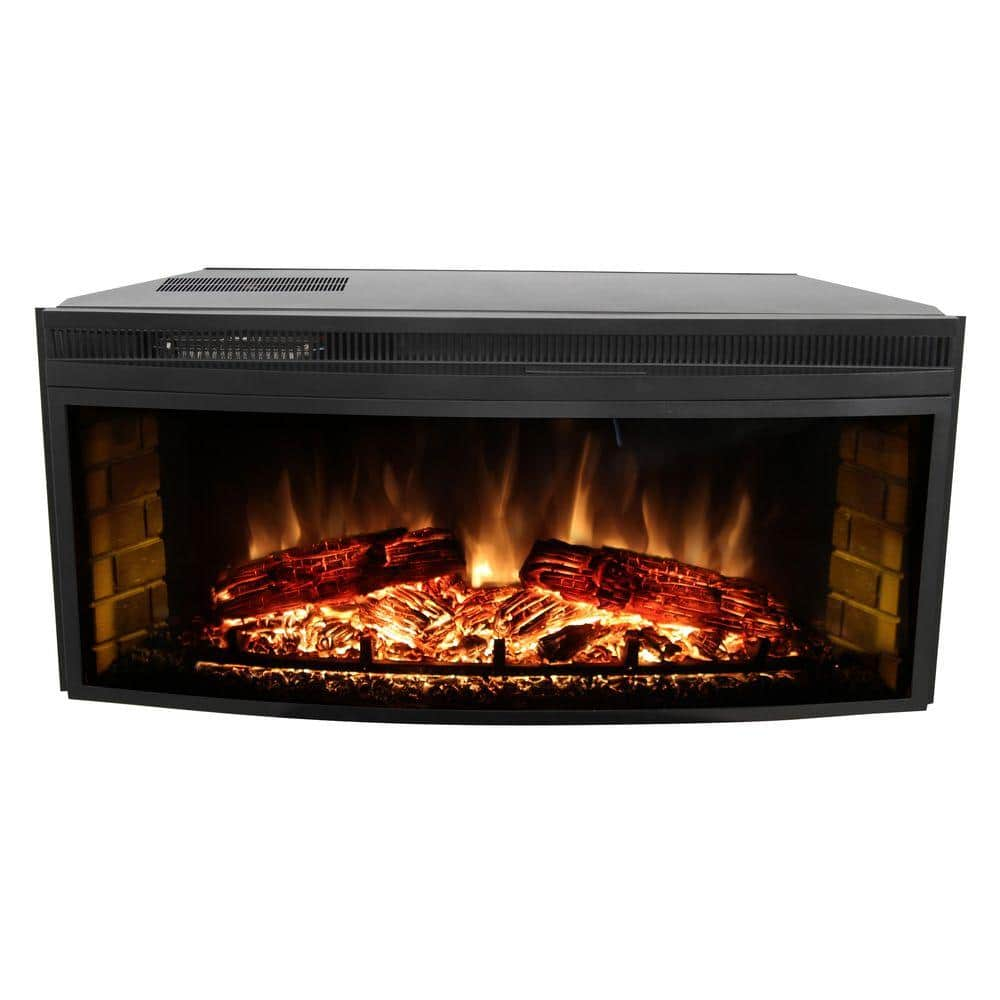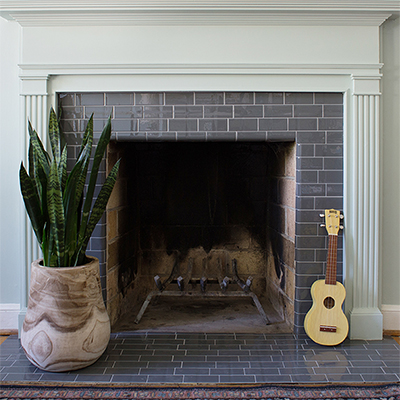How to Select a Fireplace Insert

Last updated November 21, 2024
When installed properly, a fireplace insert can help heat a room more efficiently than a standard fireplace alone. A box made of steel, cast iron or some other fireproof material creates a closed combustion system to trap the heat and contain the flame. Use this guide to learn how to select a fireplace insert. Get an overview of the types of fireplace inserts so you can choose the best one for your existing fireplace.
Table of Contents
What Is a Fireplace Insert?
Why Use a Fireplace Insert?
Measuring For a Fireplace Insert
Fireplace Insert Sizes
Choosing Heating Capacity
Electric Fireplace Inserts
What Is a Fireplace Insert?

A fireplace insert is an enclosed box that fits inside of your fireplace. Its purpose is to help trap heat and contain the flame. Fireplace inserts can be electric, gas or wood burning. Fireplace inserts can be made from steel, iron or other materials that can withstand the effects of fire. They come in a variety of styles to match your decor. The right one can enhance the beauty of your fireplace. For example, a sleek, cast iron or steel finish can add a sophisticated touch to your favorite gathering areas.
Why Use a Fireplace Insert?

Fireplace inserts offer many benefits including:
- Improved heating efficiency: A fireplace insert holds in heat, allowing more warmth to radiate from the front of the fireplace to heat your room.
- Eco-friendliness: A fireplace insert typically reduces the amount of smoke your fireplace produces. This lack of smoke improves indoor air quality and helps protect the planet.
- Simpler maintenance: A fireplace insert instantly restores a worn firebox.
Measuring For a Fireplace Insert

Fireplace inserts come in a range of sizes. They must be the right dimensions for your existing fireplace.
Before you shop, here’s how to measure for a fireplace insert:
- Length: The distance from one side of the fireplace to the other. Measure the length at both the opening and back of the firebox.
- Height: The distance from the floor of the firebox to the top. Measure in the front and back to ensure an optimal fit.
- Depth: The distance from the opening of your fireplace to the back wall of the firebox.
Tip: Use a laser distance tape measuring tool. Determine your fireplace insert’s dimension with greater accuracy.
Fireplace Insert Sizes

Fireplace inserts are not one-size-fits-all. They must be the right dimensions for your particular space, so make sure the insert you select matches the measurements of your fireplace.
Additionally, the insert needs to produce the right amount of heat for your room. The larger the room, the more heat you’ll want the fireplace insert to produce. This is a major factor when choosing the right size fireplace insert.
Choosing Heating Capacity

Your fireplace insert needs to produce the right amount of heat for your room. The larger the room, the more heat you’ll want the fireplace insert to produce. This is a major factor when choosing the right size fireplace insert. A fireplace insert's thermal output or heating capacity is measured in BTUs.
A good rule of thumb is to allow at least 20 BTUs per square foot of living space but every room's specifications are different.
- Room under 150 square feet: Choose an insert with a heat output around 5,000 BTUs.
- Small living area or medium bedroom between 150 to 450 square feet: Choose a medium-sized insert with 6,000 to 10,000 BTUs.
- Larger rooms or spaces over 550 to 1200 square feet: Choose a large insert of 12,000 to 23,000 BTUs.
Here’s how find the square feet of different rooms:
- For rectangular or square rooms, measure the length and width of the room in feet. Multiply the two figures for the square feet. Then multiply that number by 20.
- For triangular rooms, measure the length and width. Multiply the two figures and divide by 2. Then multiply that number by 20.
- For circular rooms, measure the distance from one wall to the center of the room. Multiply this number by itself and multiply the resulting figure by 3.1416. Then multiply that number by 20.
Electric Fireplace Inserts

With electric fireplace inserts, you can use an outlet next to the fireplace or install an outlet inside of the fireplace to hide the wires. Electric fireplace inserts are:
- Safer because they don't produce sparks or smoke.
- Simple to install and plug into an electrical outlet.
- Cleaner because they don’t have soot or ashes.
- Great for renters because you can just unplug and remove the insert when you move.
Some electric fireplace inserts have added features such as:
- Adjustable flame color, flicker and height.
- Dimmer control to adjust brightness of the flame.
- Crackling sound effects.
- Ability to use the flame or heat functions on their own or together.
Gas Fireplace Inserts

Gas fireplace inserts produce a real flame. In general, they offer the highest heat capacity. With gas fireplace inserts, you have two installation options:
- Vented models that require ventilation for use. Manufacturers frequently offer venting kits to simplify installation.
- Vent-free models made of fireproof materials like granite, brick or slate. These inserts generally use natural gas.
Gas inserts are available in three fuel options:
- Propane
- Natural gas
- Dual fuel, which can burn propane or natural gas
Wood-Burning Fireplace Inserts

If you like the authentic look and sound of a traditional fireplace, choose a wood-burning fireplace insert. Since fireplace inserts don't need gas or electricity, they are an ideal way to provide supplemental heat during an emergency. However, proper ventilation is necessary to safely use wood-burning fireplace inserts.
Safety Tip: Install a chimney liner before you use your wood-burning fireplace insert.
Temperature Control

Some fireplace inserts increase your level of control over heat output. These models come with a built-in thermostat, which adjusts the heating performance of the fireplace insert. When the room temperature rises above the temperature you specify, less heat is produced. If it falls below the level, heating increases.
Fireplace Insert Energy-Saving Benefits

Fireplace inserts can:
- Save energy: When you use a fireplace insert, less heat escapes through the chimney and is recirculated back into the room.
- Prevent air leaks: Even when the chimney flue is closed, warm air can still escape through the fireplace in cooler months. An insert seals the opening and reduces leaks.
- Lower energy bills: By warming up the room and stopping leaks, a fireplace insert can cut down on your heating and cooling expenses year-round.
Advanced Safety Features

Some fireplace inserts have additional safety features for your peace of mind, including:
- Automatic shutoff that turns the unit off after a set time.
- An oxygen depletion system turns the insert off when carbon monoxide produces dangerously low oxygen levels.
- Cool-to-touch glass that doesn't get hot when the insert is on. This safety feature can help protect children and pets from burn injuries.
Tip: Make sure to clean your chimney with fireplace tools after you add an insert. The National Fire Protection Association recommends cleaning a fireplace at least annually.
A fireplace insert allows you to make the most of your fireplace. Adding one to your fireplace can help you heat your home more efficiently, reduce ongoing maintenance and make your living space more attractive. Now that you know how to select a fireplace insert, use The Home Depot Mobile App to find the best one for your home. Rather have someone install your fireplace insert or need an electrical plug moved? Get professional installation help.


































